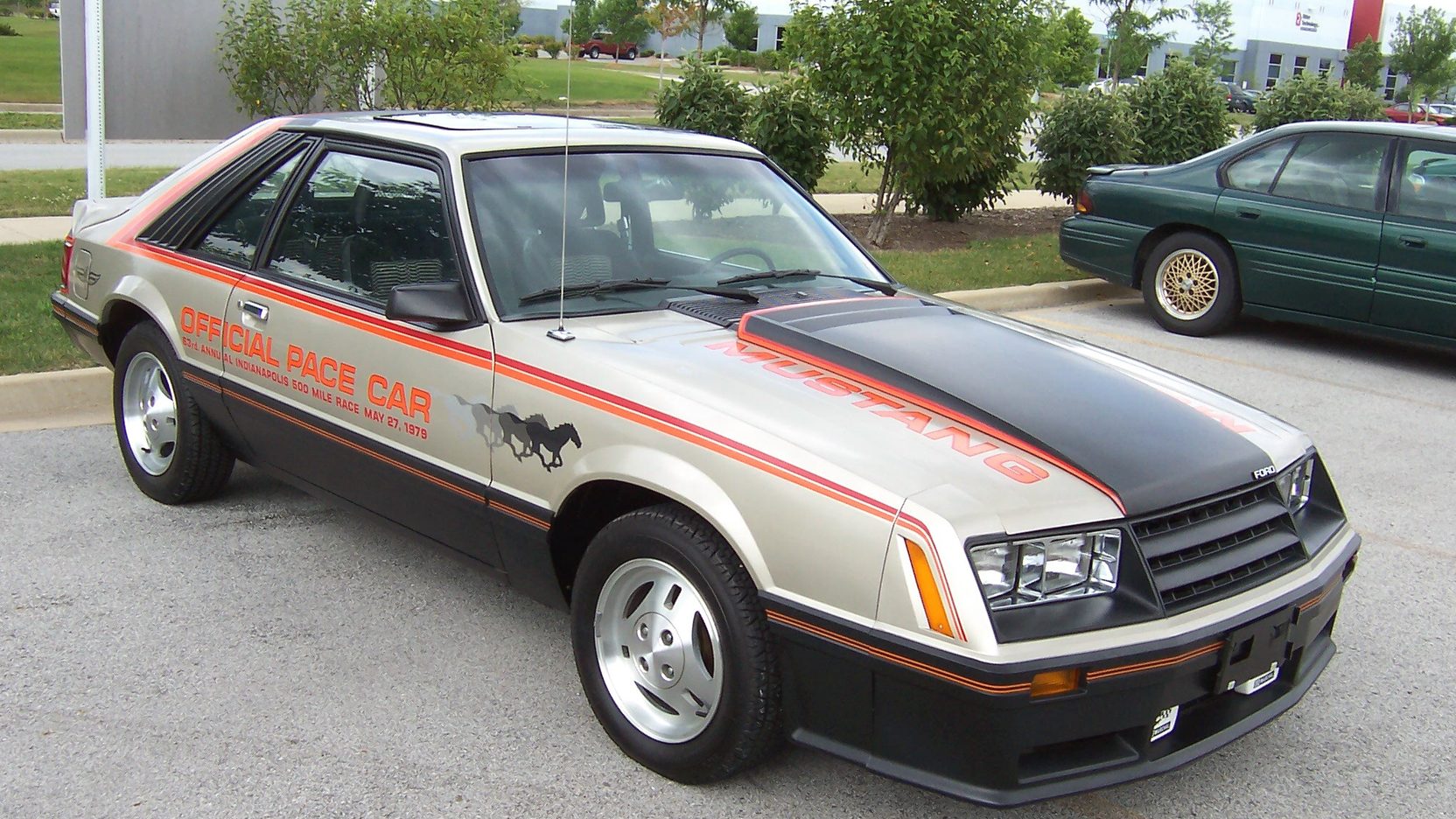1979 Ford Mustang Indy Pace Car
The Ford Mustang had a new design for the year of 1979, and Ford looked for anyway possible to promote the new Pony. After negotiations with the Indianapolis Motor Speedway, it was agreed that the 1979 Mustang would become the official Pace Car for the 63rd Annual Indianapolis 500 mile race. Because of the major publicity gained from the Indy 500, Ford set out 10,478 replicas of the Pace Car available to the public.
These Mustangs carried much of the same uniqueness that the originals had, including: non-standard issue pewter and black paint treatment; unique orange and red accent striping and pace car decal package (buyer had the option of having the “Official Pace Car” decals installed on the side or just left in a box in the back of the car); a raised, non functional Cowl Induction style hood; a revised blacked-out grill with horizontal bars; a front air dam with integral Marchal fog lights; and a unique 3 piece rear spoiler. All of the replicas included the TRX suspension and metric sized wheels and tires (Michelin TRX 190/65 390).
Interior features included black Recaro front seats with black and white checkered inserts – as well did the back seats. Also included in the interior was a leather wrapped sport steering wheel, a black simulated engine-turned instrument panel applique and an Indianapolis Motor Speedway plaque placed on the dash. The available engines included the 5.0L V8 (with either a 4spd or automatic) or the new 2.3L turbo (4 speed only.)
Unfortunately, the Jack Roush prepared 302 in the actual pace car was not offered. Top speed in the 5.0L engine could only reach 140 because of its 2V carburetor and single exhaust, and the turbo 4 topped at 137mph. Because the country was in the midst of the late 70’s fuel shortage and Ford was pushing turbo power over the V8, about 1500 more 2.3L were sold than its 5.0L big brother (5970 2.3L, 4508 5.0L of which 2106 were Auto and 2402 were 4spd).
The engine in the actual pace car featured a host of performance parts and was built by renowned engine tuner Jack Roush. A hot engine was necessary because the pace car had to fulfill a requirement of accelerating from a steady speed of 90 MPH midway through the fourth turn to 110 MPH by the time it pulled off the track and into pit road. Naturally the brakes were uprated too, using semi-metallic linings from the Fairmont Police Package.
Besides the engine modifications the car also featured strobe lights in the fog and tail lights and a custom made t-top configuration (only a pop-up sunroof was available on the replica) was created to give the crowd and photographers a better view of the interior and driver as the car circles the track at the start of the race.
The driving duties were handled by famous Grand Prix racing driver and then Ford pitchman Jackie Stewart.





